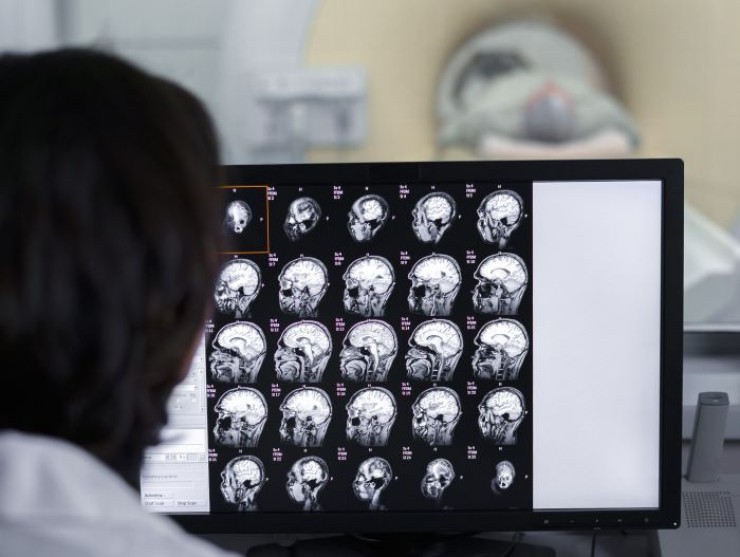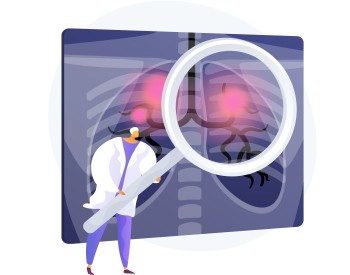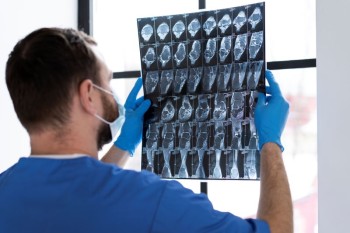
HRCT Temporal Bone Scan is a specialized imaging procedure that focuses on providing detailed insights into the structures of the temporal bone, critical for auditory and vestibular functions.
HRCT Temporal Bone Plain in India with Cost
HRCT Temporal Bone Scan:
Unraveling Auditory Precision
Introduction
Exploring Auditory Health with HRCT Temporal Bone Scan
HRCT Temporal Bone Scan is a specialized imaging procedure that focuses on providing detailed insights into the structures of the temporal bone, critical for auditory and vestibular functions. This comprehensive guide aims to illuminate the significance, procedure, and applications of HRCT Temporal Bone Scan, offering a thorough understanding of its role in auditory diagnostics.
Understanding HRCT Temporal Bone Scan
What is HRCT Temporal Bone Scan?
HRCT Temporal Bone Scan, or High-Resolution Computed Tomography Temporal Bone Scan, is an advanced imaging technique that utilizes computed tomography to capture high-resolution images of the temporal bone. This specialized scan offers a detailed view of the intricate structures involved in hearing and balance.
The Significance of HRCT
Temporal Bone Scan
Precision in Auditory Imaging
HRCT Temporal Bone Scan plays a crucial role in achieving precision in auditory imaging, offering detailed views of the temporal bone to identify conditions such as hearing loss, ear infections, or structural abnormalities.
Evaluation of Inner Ear Structures
With high-resolution images, the scan facilitates a comprehensive evaluation of inner ear structures, aiding healthcare professionals in diagnosing and planning appropriate interventions for auditory and vestibular disorders.
The Procedure: A Step-by-Step Guide
Patient Preparation
Patients undergoing HRCT Temporal Bone Scan typically require minimal preparation. It's essential to communicate any allergies or relevant medical history to the healthcare team.
Image Acquisition
The CT scanner captures multiple high-resolution images, providing detailed cross-sectional views of the temporal bone, including the cochlea, semicircular canals, and other critical auditory structures.
Applications of HRCT Temporal Bone Scan
Diagnosing Hearing Loss and Ear Infections
HRCT Temporal Bone Scan is highly effective in diagnosing hearing loss and ear infections, offering precise images that assist in determining the location, extent, and characteristics of these conditions.
Identifying Structural Abnormalities
The detailed imaging capabilities of this scan make it an invaluable tool for identifying structural abnormalities affecting auditory and vestibular functions, contributing to accurate diagnoses.
Advantages and Considerations
Advantages of HRCT Temporal Bone Scan
Detailed Visualization of Auditory Structures
HRCT Temporal Bone Scan provides detailed visualization of auditory structures, ensuring accurate assessment and aiding in the identification of various ear-related conditions.
Quick and Non-Invasive Procedure
The procedure is relatively quick and non-invasive, contributing to patient comfort and ease of examination while delivering high-quality diagnostic information.
Considerations and Precautions
Radiation Exposure
As with any CT scan, consideration is given to radiation exposure. The healthcare team carefully evaluates the benefits against the risks for each patient.
Conclusion
In conclusion, HRCT Temporal Bone Scan emerges as an essential diagnostic tool, providing detailed and high-resolution images for precise assessment of auditory and vestibular conditions. From hearing loss to structural abnormalities, this imaging technique significantly contributes to enhancing auditory health diagnostics.
FAQs: Clarifying HRCT Temporal Bone Scan
1. Is HRCT Temporal Bone Scan a painful procedure?
No, the procedure is generally painless. Patients may experience slight discomfort lying still during the scan.
2. How long does an HRCT Temporal Bone Scan take?
The procedure typically takes around 15 to 30 minutes, depending on the patient's condition.
3. Are there any dietary restrictions before an HRCT Temporal Bone Scan?
Generally, there are no specific dietary restrictions for this scan. However, patients are advised to follow any instructions provided by the healthcare team.
4. Can pregnant women undergo HRCT Temporal Bone Scan?
While generally safe, precautions are taken for pregnant women, and alternative imaging methods may be considered.
5. How often is HRCT Temporal Bone Scan recommended for follow-up examinations?
Follow-up scans are scheduled based on the individual's medical history and the presence of specific auditory conditions.
6. Can HRCT Temporal Bone Scan detect middle ear infections?
Yes, HRCT Temporal Bone Scan is highly sensitive and can effectively detect middle ear infections, providing valuable information for diagnosis and treatment planning.
7. Is HRCT Temporal Bone Scan suitable for all age groups?
Yes, HRCT Temporal Bone Scan can be performed on individuals of various age groups, from pediatric to adult patients, depending on their health condition.
8. How often is HRCT Temporal Bone Scan used in cases of balance disorders?
HRCT Temporal Bone Scan is frequently utilized in cases of balance disorders to assess the inner ear structures and identify potential causes of vestibular dysfunction.
9. Are there any side effects associated with the contrast dye used in HRCT Temporal Bone Scan?
HRCT Temporal Bone Scan typically does not involve the use of contrast dye. However, if contrast is necessary, the healthcare team ensures that any potential risks are carefully considered.
10. Can HRCT Temporal Bone Scan diagnose congenital hearing abnormalities in infants?
Yes, HRCT Temporal Bone Scan can be valuable in diagnosing congenital hearing abnormalities in infants, providing detailed imaging of the inner ear structures.
(0)
Login to continue



